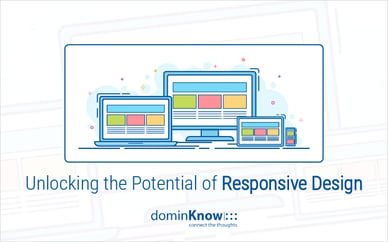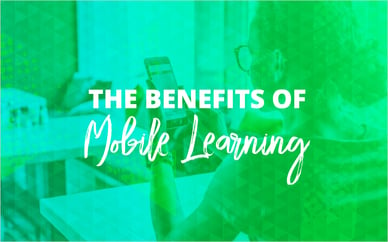
In November 1999, Elliott Masie coined the word "eLearning" at his TechLearn Conference at Disneyworld.
Since then, online training has exploded in popularity.
In the 2000s, mobile devices ushered in a new buzzword: mLearning.
mLearning (also written M-learning or mobile learning) is the idea that a student can learn from any place at any time using portable learning devices.[1]
Why was mobile learning such an exciting buzzword? Mobile learning represented the next era of training, packed with benefits for employees and employers.
Key Benefits of Mobile Learning:
Accessibility
Learners can access the information on-demand, whether they’re in the field or at their desk.
Immediacy
mLearning takes just-in-time training to a whole new level. Learners can retrieve information right when they need it.
Interactivity
Through social media and other learning communities, learners can easily interact with peers, teachers, and experts.
Context-awareness
Using mobile devices’ built-in GPS, the learning content can adapt to the learners’ real situations and provide relevant information for the learners.
Affordability
Mobile devices are typically cheaper than desktop computers, bringing online training to more people across the world.
Higher Engagement
Learners are used to engaging with content on mobile devices in their everyday life and many prefer to access their learning on those same devices.
For years, mobile learning was just another buzzword highlighted on “upcoming trends in eLearning” lists, but never really utilized—until authoring tools started offering responsive design capabilities.
Is mobile learning still just a buzzword that instructional designers and developers hope to implement in the future, or has it finally become commonplace in corporate training?
eLearning Brothers Custom Solutions recently put together an HTML5 mobile learning solution for a client in New York City. The client came to us after trying out a classroom training program that failed to have the reach they were hoping for. Mobile learning gave them a way to make their content more accessible to people across the city.
This past summer, Google launched an updated version of Socratic, a mobile learning app that uses AI technology to help high school and university students when they’re doing school work outside the classroom.
Both of these examples represent real-world case studies of the benefits of mobile learning: immediacy, convenience, interactivity, engagement.
At eLearning Brothers, we don’t just create mobile learning for our custom development clients. Our template subscribers were clamoring for mobile options too. That’s why we build our Course Starter template files using each authoring tool’s responsive authoring features, so that you can quickly put together a mobile learning course that looks great on all devices.
In addition, many of our microlearning off-the-shelf courses are mobile-responsive.
Mobile learning consistently ranks as more engaging to learners and it allows designers and developers to do some incredibly cool and creative things. We love mobile learning and we’re very excited to see where it goes as virtual reality and augmented reality become more as prevalent as mobile learning is now.
Are you building mobile learning for your organization? Check out our mobile-responsive templates with a free trial of the eLearning Brothers Asset Library.
[1] http://www.srjis.com/pages/pdfFiles/146684584024%20Deepak.pdf








